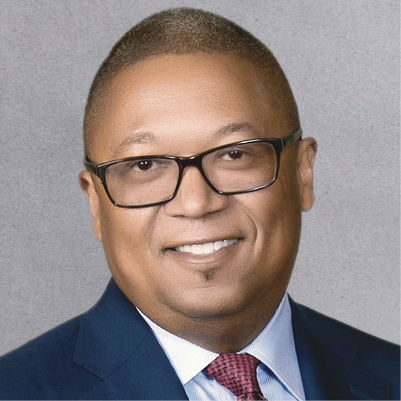Surgeon & entrepreneur shares how AI & disruptive innovation are revolutionizing his practice

William Payne, M.D., is always looking for the latest ways to integrate technology into his practice. An orthopedic surgeon at Franciscan Health in Olympia Fields, Illinois, Dr. Payne is also a healthcare executive, an entrepreneur and a HealthTrust Physician Advisor. Recognizing the value of technology as a vital tool in healthcare, Dr. Payne co-founded myowndoctor.com, a telemedicine and population health platform helping providers virtualize care, educate patients and caregivers, perform remote monitoring and help care teams coordinate with each other. For Dr. Payne, the future is now: He also uses artificial intelligence (AI) in his operating room and sees “disruptive innovation” as a driving force in patient care.
We spoke with Dr. Payne about his vision for how AI and disruptive innovation have transformed his practice, and how he sees them shaping the future of orthopedic surgery.
Why is disruptive innovation influential in healthcare and how is its role growing?
DR. PAYNE: Disruptive innovation is important in healthcare because of the amount of material that must be consumed. For example, about 8,000 new pieces of healthcare literature are published each day. No single person can read it all, but through algorithmic analysis of structured data, a machine can. A machine can take, for example, an identified genetic mutation associated with a disease like cancer and attach the literature, clinical evidence or trial results for that very specific patient. Machines can harness information and insight in a way that would be too difficult for any one person.
As computer and information technology capabilities become faster and more robust, opportunities for disruptive innovation will increase. About 80% of data in healthcare is unstructured and unorganized, so we have to be able to pull out the nuggets of truth. Machines are now better able to do that, finding trends before a person could. For example,
Franciscan Health is using software to examine all hospitalized patients’ vitals, doctors’ notes and lab values to predict when that patient could run into trouble with something like sepsis. Those kinds of innovations are the breakthroughs patients want. It’s like having your own individual doctor focused only on you 24 hours a day, seven days a week.
How has innovation been optimally applied in orthopedic surgery?
DR. PAYNE: Computerized assisted navigation allows orthopedic surgeons to use robotic technology to help position screws, prostheses or tunnels in the bone. That’s been exciting, because it makes the procedures more reliable across many different users and patient variations.
In a 2018 Advisory Board survey, more than one-third of respondents said they expect AI to add “transformative value” to their systems and up to 12% currently utilize AI. How do you incorporate AI into your practice? Do most orthopedic surgery practices embrace AI?
DR. PAYNE: I work with a robot enabled with AI to help position screws in the pedicle of the spine when doing lumbar fusion surgery. When I perform hip surgery, I also rely on computer assistance to place the socket and AI to position the cup, as well as with the placement and alignment of the artificial joint in knee replacement surgery.
I think every orthopedic surgeon is looking for ways to make their surgeries more reliable, faster and better for the patient, so they’re exploring how these technologies can enhance what they do. While most practices embrace innovation, they really want to make sure it’s actually improving upon what they already have.
What other ways can orthopedic surgeons potentially expand the use of AI in the future?
DR. PAYNE: We’ll see many different uses of AI going forward. For example, [technology could] help predict that a patient is having a balance problem or is at risk for a fall. Based on a set of characteristics—whether it be the number of steps they took in their house or a transducer in their watch that measures changes in their balance—you could proactively avoid some of the falls or treat problems before they become severe. That’s where it gets exciting—being able to recognize trends early and preventing bad things from happening.
Share Email AI, Q4 2019, Robotics





